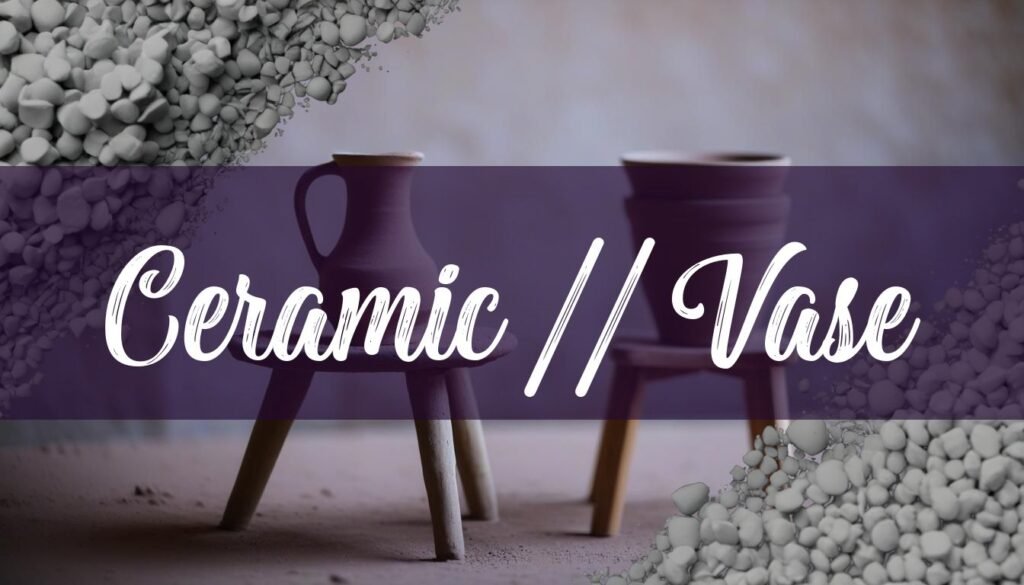Finding the perfect ceramic vase to paint can be an exciting first step into a world of personalized art and home décor. Whether you’re a seasoned artist or a beginner looking for a fun project, the options for sourcing these blank canvases are plentiful and diverse. Understanding where to look and what to consider will help ensure that your painting experience is both enjoyable and successful, leading to a beautiful, custom-designed piece.
Exploring Your Options for Ceramic Vases
The quest for the ideal ceramic vase to paint can lead you down various paths, each offering its own unique advantages. Online marketplaces, such as Amazon and Etsy, provide a vast selection, catering to different styles, sizes, and budgets. These platforms allow you to browse from the comfort of your home, compare prices, and read customer reviews to gauge the quality of the vases. However, the online experience lacks the tactile element of feeling the vase’s surface and assessing its texture firsthand.
For a more hands-on experience, brick-and-mortar craft stores like Michaels and Hobby Lobby are excellent choices. These stores offer a curated selection of ceramic vases specifically intended for painting, often available for immediate purchase. The in-store environment allows you to physically inspect the vases, ensuring they meet your criteria for shape, size, and surface texture. Additionally, these stores frequently offer discounts and promotions, making them a cost-effective option.
Thrifting and upcycling present another avenue for finding ceramic vases, appealing to those who value sustainability and unique finds. Local thrift stores, flea markets, and garage sales can yield hidden gems at bargain prices. This approach not only saves money but also gives a new lease on life to pre-owned items. When thrifting, it’s important to carefully examine the vases for any cracks, chips, or imperfections that might affect the painting process. You might even be inspired by historical pieces if you explore ancient Greek pottery for design ideas.
Local art supply stores and pottery studios are valuable resources for higher-quality ceramic vases. These establishments often carry a range of bisque-fired vases, which are specifically made for painting and glazing. Pottery studios may also offer workshops or classes that teach various painting techniques and provide access to professional equipment and advice. While these options may be more expensive, the investment can be worthwhile for those seeking a superior painting surface and expert guidance. For those interested in the process, consider looking into how to get started with pottery.
Selecting the Right Ceramic Vase and Preparing it for Painting
Choosing the right ceramic vase for your painting project involves considering several factors, including surface texture, shape, and material composition. The ideal vase should have a smooth, slightly porous surface to ensure optimal paint adhesion. A rough or uneven surface may require additional preparation, such as sanding, to create a suitable painting canvas. The shape of the vase should also complement your intended design, whether it’s a simple geometric pattern or a more intricate floral motif.
Before you begin painting, it’s crucial to properly prepare the ceramic surface. Start by cleaning the vase with a damp cloth to remove any dust, dirt, or oils that could interfere with paint adhesion. For glazed surfaces, lightly sanding the vase with fine-grit sandpaper can create a slightly rougher texture, improving the paint’s grip. After sanding, wipe the vase clean to remove any sanding residue. Applying a primer specifically designed for ceramics can further enhance paint adhesion, particularly on non-porous surfaces.
Paints, Designs, and Sealing Methods
Selecting the right paints is just as crucial as selecting and preparing the vase. Acrylic paints are a popular choice for painting ceramic vases due to their versatility, ease of use, and wide range of colors. Acrylic paints work well on unglazed pottery because it’s bright, non-toxic and fast-drying, making it easy to use. Porcelain paint is an excellent choice for glazed ceramics as it sticks to the surface better than acrylic. Enamel paints, which are oil-based, are also an option, offering excellent durability and a glossy finish. Ultimately, the best paint depends on the type of ceramic surface and the desired aesthetic.
Once you’ve chosen your paints, it’s time to unleash your creativity and bring your design to life. Simple patterns like polka dots, stripes, and geometric shapes are great for beginners. More experienced artists can explore intricate floral motifs, abstract art, or personalized designs that reflect their unique style. Techniques like stenciling, freehand painting, and layering can add depth and visual interest to your ceramic vase. For inspiration, online platforms like Pinterest offer a wealth of ideas and tutorials.
To protect your painted design and ensure its longevity, sealing the ceramic vase is essential. A clear acrylic spray sealant can create a protective barrier against chipping, fading, and moisture damage. Apply the sealant in thin, even coats, following the manufacturer’s instructions for drying times. For vases that will be used for holding water, consider sealing the interior with a waterproof sealant to prevent leaks. Alternatively, baking the painted vase in an oven can help to cure the paint and create a more durable finish, although this method is not suitable for all types of paints and ceramics. With proper care and sealing, your hand-painted ceramic vase will become a cherished piece of art that you can enjoy for years to come.





